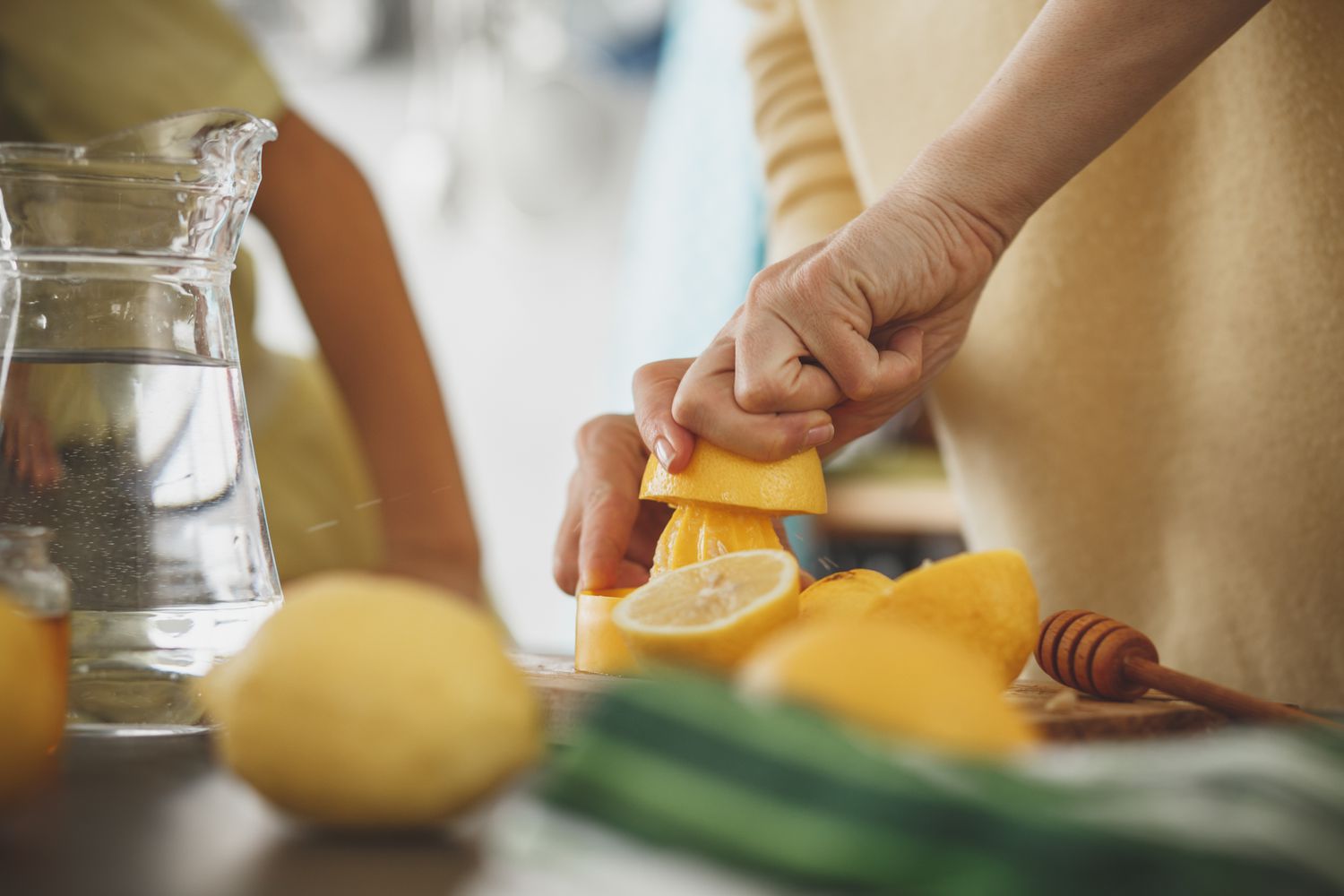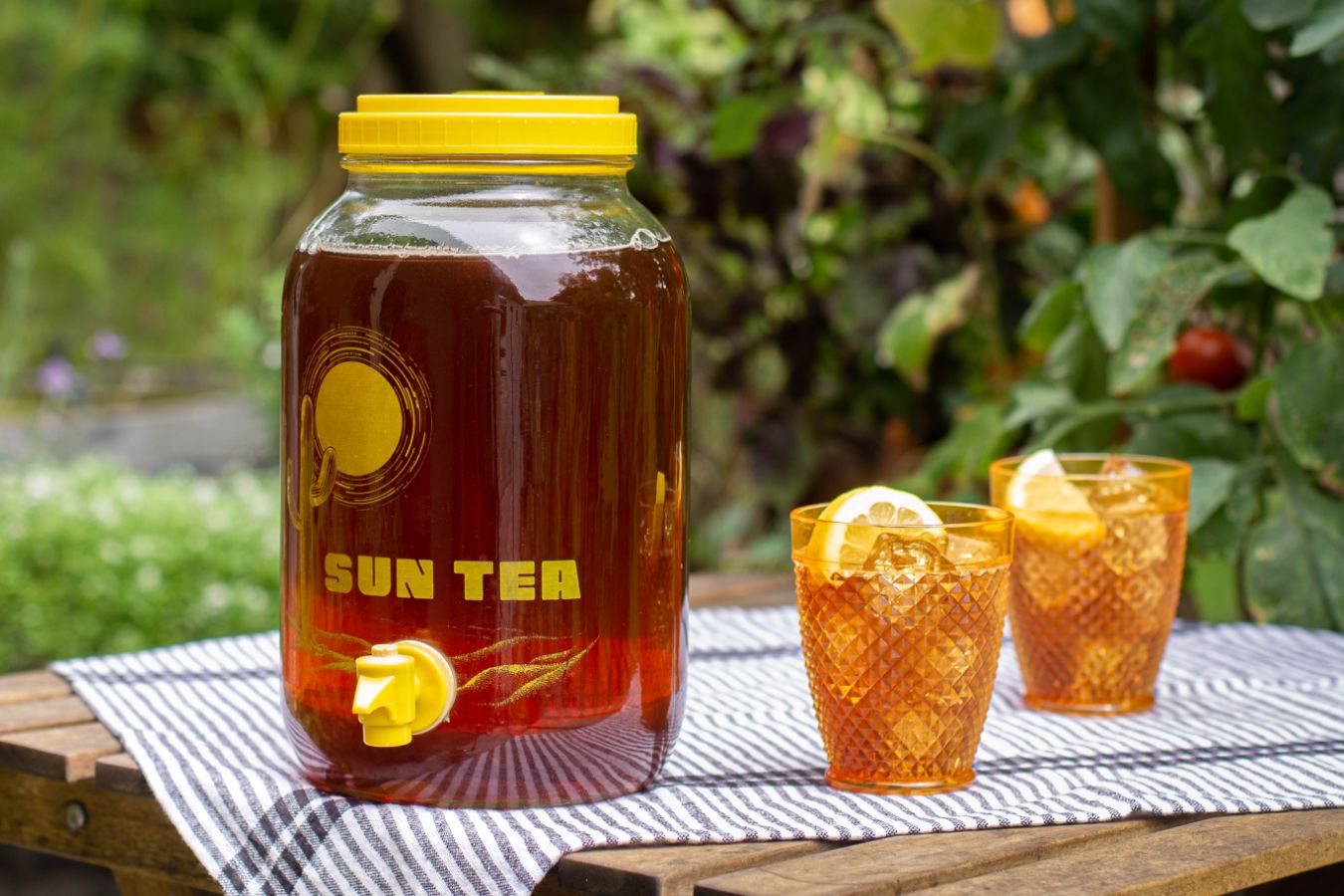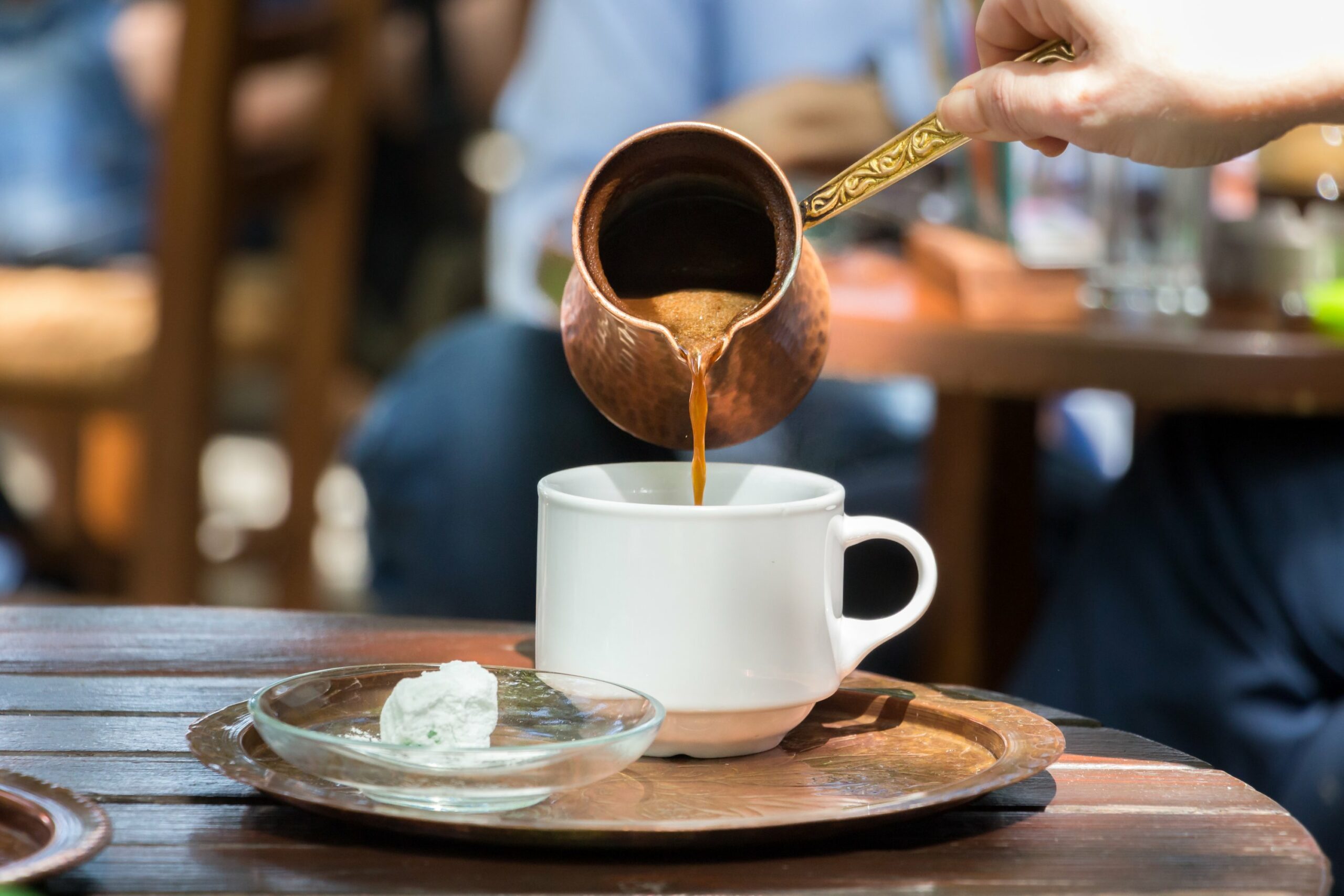Home › Christmas Dinner › How to Make Turkey Gravy
Making the turkey gravy is one of the last steps to making the perfect turkey dinner. For me, a good gravy is absolutely essential. I’ll happily drown my turkey and mashed potatoes in it, and then go back for more.
Making gravy isn’t hard at all, and it can be a real safety net if your turkey didn’t turn out quite as perfect as you hoped. If it’s too dry or not flavorful enough, a good turkey gravy will make everything better!
And the best way to make gravy is to make a delicious homemade turkey gravy from the turkey drippings and some turkey stock. And when you’ve just roasted a turkey, all it takes is a little planning.
In this article, I’ll talk about about the different things that go in a good gravy, and then I’ll talk about how to make gravy from those ingredients.
What Makes A Good Gravy
Turkey gravy is actually pretty flexible. There are lots of different ways to make an awesome gravy. But it almost always comes down to some combination of these four ingredients: drippings, liquids, flour and seasonings.
Drippings
The real secret to making the best turkey gravy is to use the drippings from a roast turkey. When you roast a turkey, a lot of the juices drip down into the pan. After a while, they start to cook, making them intensely flavorful.
- It’s important to keep an eye on the drippings while the turkey is cooking. If they look like they’re starting to burn, add some water or stock.
- Sometimes accidents happen and drippings burn. In that case, it’s better to not use them at all, because they can get really bitter. But don’t worry. You can still make a great gravy from turkey or chicken stock!
Once the turkey is done roasting, it needs to stand for about 30 minutes. It’s the perfect opportunity to make the gravy! So take the turkey out of the roasting pan, and set it aside. It’s time to think about the drippings.
- You should be able to pour most of the drippings out in a tall pitcher. A tall, thin container is best, because the grease floats up to the top — and it’s easier to degrease a thick layer than a thin one.
- There might be some little brown bits of cooked drippings left in the pan, called the fond. You don’t want to forget the fond, because it’s the most flavorful part!
- The best way to get the fond out is to deglaze the pan. Just heat the pan on the stovetop over medium heat, then add a bit of liquid like turkey stock. Then scrape the bottom and stir.
- Not all roasting pans can go on the stovetop. Some pans will warp under the heat, which can not only ruin your pan — it can be dangerous and fling hot grease at you.
- Generally, the thinner a pan is, the more likely it is to warp. But a heavy pan like stainless-steel with an aluminum core is usually perfect for the stovetop.
- If you’re not sure, or if you know your pan can’t go on the stovetop, you can try scraping what you can off the bottom with a spoon or a spatula.
- If you have a non-stick pan, you should never scrape it. But it shouldn’t be an issue, because the yummy brown bits won’t usually form on a non-stick pan, anyway.
And that’s what you need to know about drippings for our easy turkey gravy.
Liquids
The drippings are the basis for a very tasty turkey gravy, but they’re not all you need.
You might not have enough drippings to make enough gravy for everyone, or they might be too intensely flavored and need to be diluted a bit. Or you might not even have drippings at all!
So you need some flavorful liquids to make the bulk of your gravy. Here are a few options:
- Turkey stock or broth is the best option for an easy turkey gravy. You’re guaranteed that the flavor will blend well with your drippings!
- You can make turkey broth with the giblets. Put them in a pot, cover them with a few cups of water, and then simmer them for a few hours. You can add some onions, celery, carrots or garlic to the pot for some extra flavor.
- Once the broth is done, keep the liquid but toss out the rest.
- You can make the broth ahead of time. It’ll keep in the refrigerator for a few days, and you can freeze it for months.
- If you don’t have turkey stock on hand, you can use chicken stock, too. If you have homemade chicken stock, it’ll be even better.
- You can use other less flavorful liquids, too — the drippings provide plenty of flavor. If you’re making mashed potatoes, you can use the potato cooking water. You can even use just plain old water.
- If you want to add a bit of a different flavor, you can use fruit juices (like apple juice), vegetable juices, or a bit of white wine.
- If you want a creamy gravy that’s more like a white gravy, you can add a bit of milk or cream to the mix.
The liquids are important to increase how much gravy you end up with. And depending on which you pick, you’ll end up with a turkey gravy with a slightly different flavor.
Flour
A mixture of turkey drippings and stock will be delicious. Very flavorful. But it won’t be gravy. Why not? It’s not thick enough. To make a good gravy, you need to add a thickener: flour.
If you’ve ever used flour to thicken, you’ll know that its most annoying feature is its tendency to create big gooey lumps — not appealing at all. But there are ways to avoid it.
- One way is to make a slurry. Just combine 1 tablespoon of flour with 2 tablespoons of cold stock, milk or water in a small jar. Put the lid on and shake it very vigorously. Add the slurry to the gravy, whisk it in until it’s smooth, and bring it to a simmer.
- You can also mix it in a bowl, but you need to mix it very, very well or it’ll lump.
- Once you add the slurry, the gravy will need to simmer 10 minutes or so to thicken and to cook the flour enough to get rid of the floury taste.
- Each tablespoon of flour will thicken one or two cups of gravy.
- You can also make a roux. In a small saucepan, melt 1 tablespoon of butter over medium low heat. Whisk in the flour until the mixture has the texture of a smooth wet sand. Let the roux bubble for a bit, until it loses the smell of raw flour (4 to 5 minutes).
- You may need to add more butter or more flour to get the texture right.
- The longer the roux cooks, the darker it’ll get, giving you a darker gravy.
- Don’t add the roux directly to the gravy — instead, add a bit of gravy to the roux and whisk it until it’s thick and smooth. Then add it back into the gravy. It’ll help prevent lumping.
- Again, each tablespoon of flour will thicken a cup or two of gravy.
Seasonings
If you like, you can also add some extra seasonings to your gravy. It’s not necessary — turkey gravy just naturally goes well with turkey! But sometimes it’s nice to add a little extra something.
- Herbs like rosemary, thyme, and sage go really nicely with turkey gravy.
- You can also add spices like salt and pepper.
- Aromatics like garlic are always good!
- A bit of wine or vinegar can add a little kick to your turkey gravy — they just need to cook in the gravy a bit to boil off the alcohol or break down the acids.
A little bit of advice on seasoning — taste first, season second. Add a bit of seasoning at a time, and then taste again to see if you need more. Remember, it’s much, much easier to add extra seasoning than it is to remove some!
And there you have it. Those are the four ingredients that make up our easy turkey gravy. Now let’s find out how to make it.
How To Make Gravy
Now that we know what goes in a gravy, we can put it all together and find out how to make an easy turkey gravy.
There are a few different ways to to do, depending on whether or not your roasting pan goes on the stovetop, and whether or not you prefer to use a roux or a slurry.
Roasting Pan On The Stovetop Method
If your roasting pan is stovetop safe, and you have room for it (it might take up two burners), then you can use this method to make gravy.
Here’s how you do it:
- Take the turkey out of the roasting pan and set it aside. Pour the drippings out of the pan into a container, then let them rest.
- Place the roasting pan on the stovetop over medium low heat.
- Melt 3 to 4 tablespoons of butter for every cup of drippings you have. Add the same amount of flour as butter, and whisk it until it has the consistency of a smooth, wet sand. Let it cook and bubble for 4 to 5 minutes, until it loses its raw flour smell.
- Degrease the drippings, then slowly add them to the roasting pan, whisking the mixture constantly to keep it smooth. Be sure to scrape the bottom of the pan to deglaze it.
- For every cup of drippings, add 3 cups of liquids. It can be any combination of stock, water, juice, or wine.
- Add any seasonings you like, and let the gravy simmer for about 10 minutes.
And now you have a delicious gravy to go with your turkey!
Saucepan Method
If your roasting pan isn’t stovetop safe, there’s no need to worry. You can always make your gravy in a saucepan. In fact, if you’re low on stovetop space, you might even prefer this method no matter what!
Here’s how to do it:
- Take your turkey out of the roasting pan and set is aside. Scrape up everything you can from the bottom of the pan, pour it out with the drippings into a container and set it aside.
- In a medium saucepan over medium low heat, melt 3 to 4 tablespoons of butter for every cup of drippings you have. Add the same amount of flour as butter, and mix it until it has the consistency of smooth, wet sand. Let it cook and bubble for 4 or 5 minutes.
- Remove the layer of grease from the drippings, and then slowly add the drippings to the saucepan, whisking to keep it smooth.
- For every cup of drippings, add 3 cups of stock or other liquids.
- Add any seasonings you like.
- Let the gravy simmer for 10 minutes or so, and then serve.
Again, you’ll end up with a fantastic turkey gravy.
Alternative Methods
If you don’t want to bother making a roux (the butter-flour mix), you can thicken your gravy using a slurry. It just takes a few changes.
- Instead of melting butter and adding flour, just add all the degreased drippings and liquids directly to your roasting pan or saucepan.
- Make a slurry, as described above, using 1 tablespoon of flour for every cup of gravy. Whisk it in the liquids.
- After that, you can add your seasonings and let it simmer until it’s thick, about 10 minutes. If it tastes like raw flour, it just needs to simmer a bit more.
Notes
- It really is important to degrease the drippings. Otherwise, your gravy might turn out super greasy. But leaving a few tablespoons for taste won’t hurt.
- Instead of using butter, you can use the same amount of grease, skimmed off the drippings.
- I recommended using 3 cups of liquid for each cup of drippings, but your drippings might be more or less flavorful. If you have very little, they’ll probably be super tasty, and you can add more liquid. Really, there’s no fixed proportions, and lots of combinations will give awesome results.
- You might not need to use all the drippings to make your gravy. It depends on how much you want to end up with. Don’t make 10 cups of gravy if you’re serving 4 people who only use a bit!
- If you don’t have any drippings from a roast turkey, you can still make an awesome gravy with stock and other tasty liquids. Just follow the same instructions, skipping the deglazing and drippings parts.
- If your turkey gravy is a bit lumpy, you can fix the problem by passing it through a sieve or strainer.
And there you have it! A delicious, easy turkey gravy that’ll have your guests coming back for more!
Enjoy!























 The best way to get the flavor in the brine is to boil the brine and seasonings together — just like tea.
The best way to get the flavor in the brine is to boil the brine and seasonings together — just like tea. Add the salt and sugar (if any) and stir until all the crystals are dissolved.
Add the salt and sugar (if any) and stir until all the crystals are dissolved.